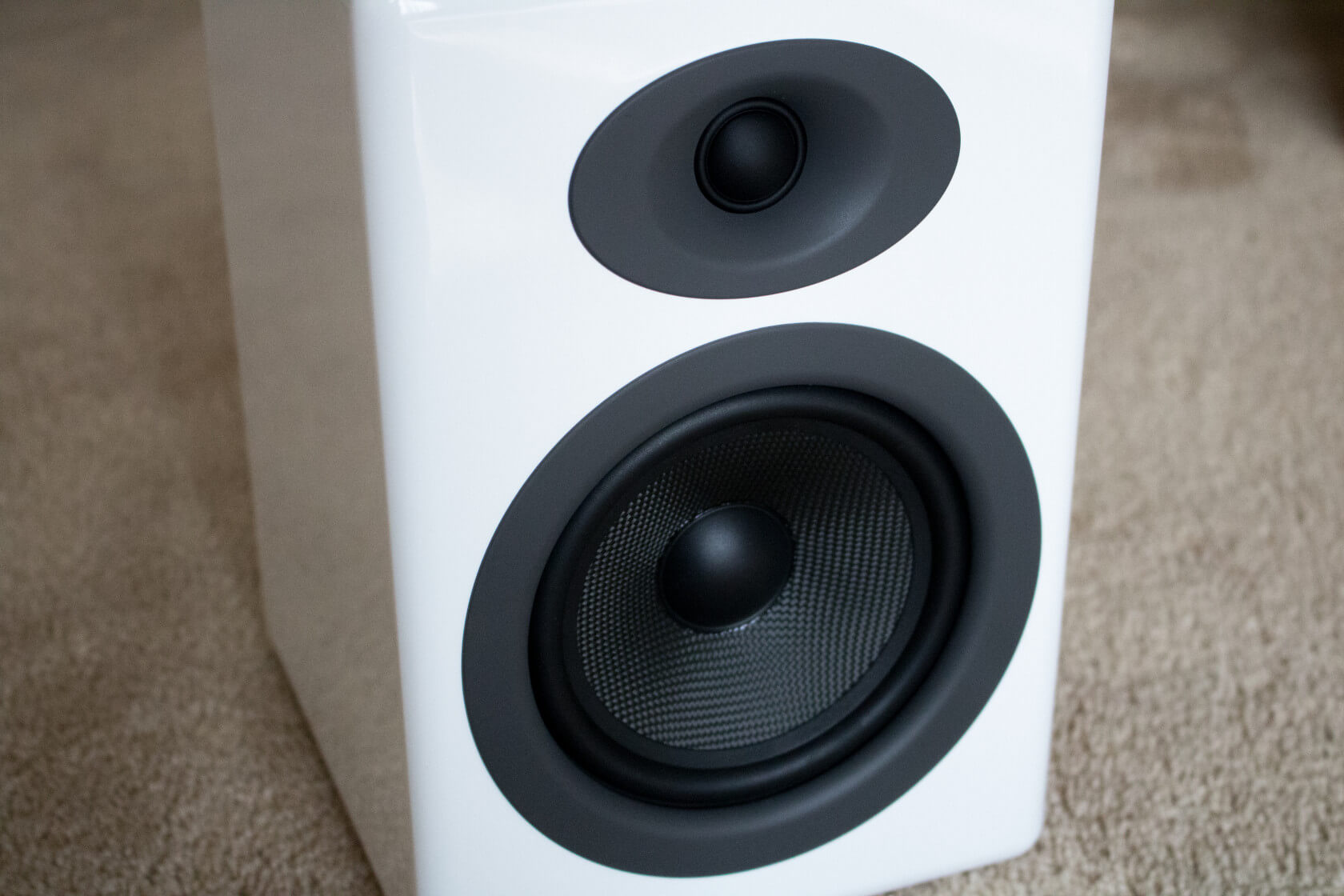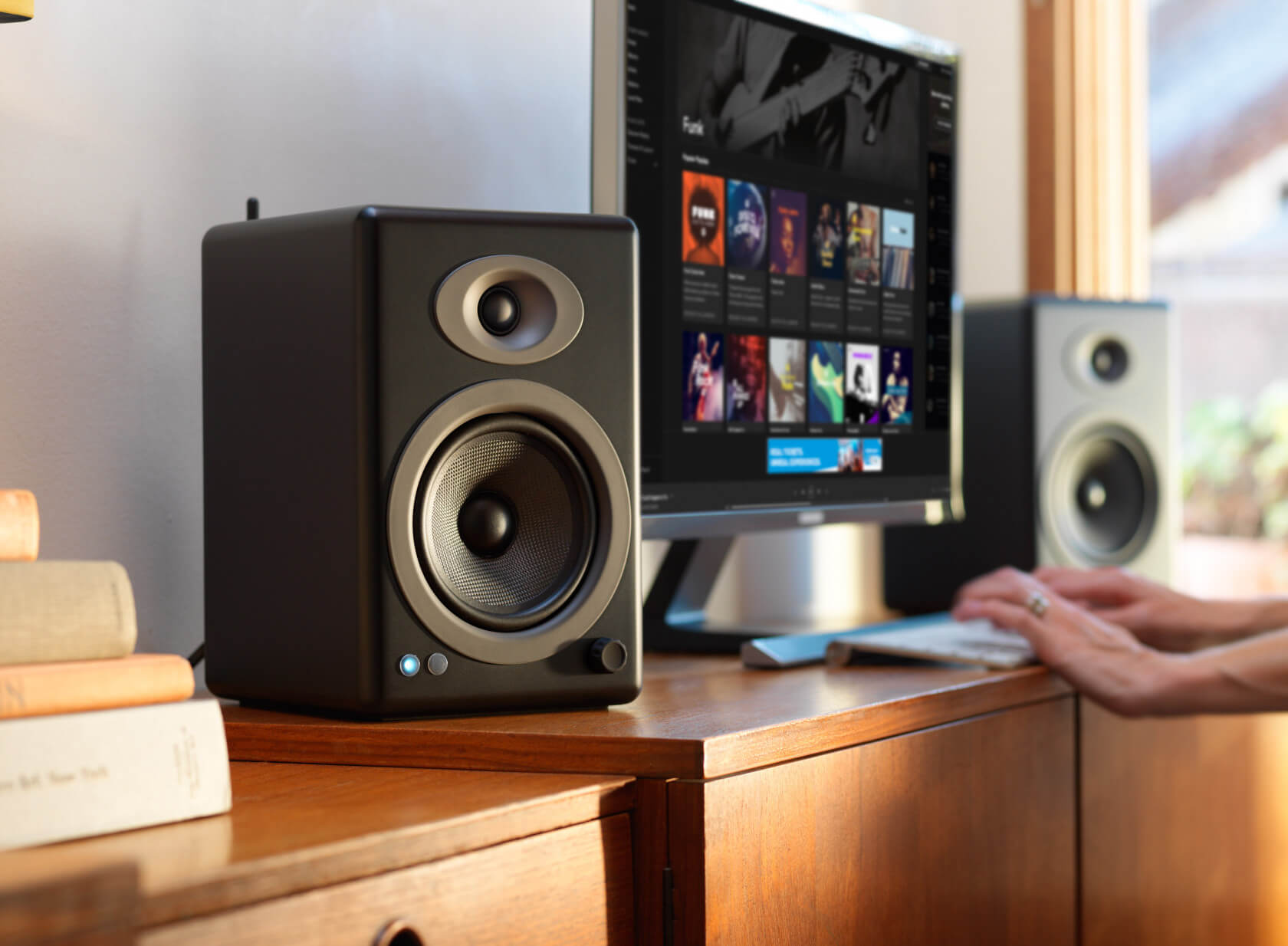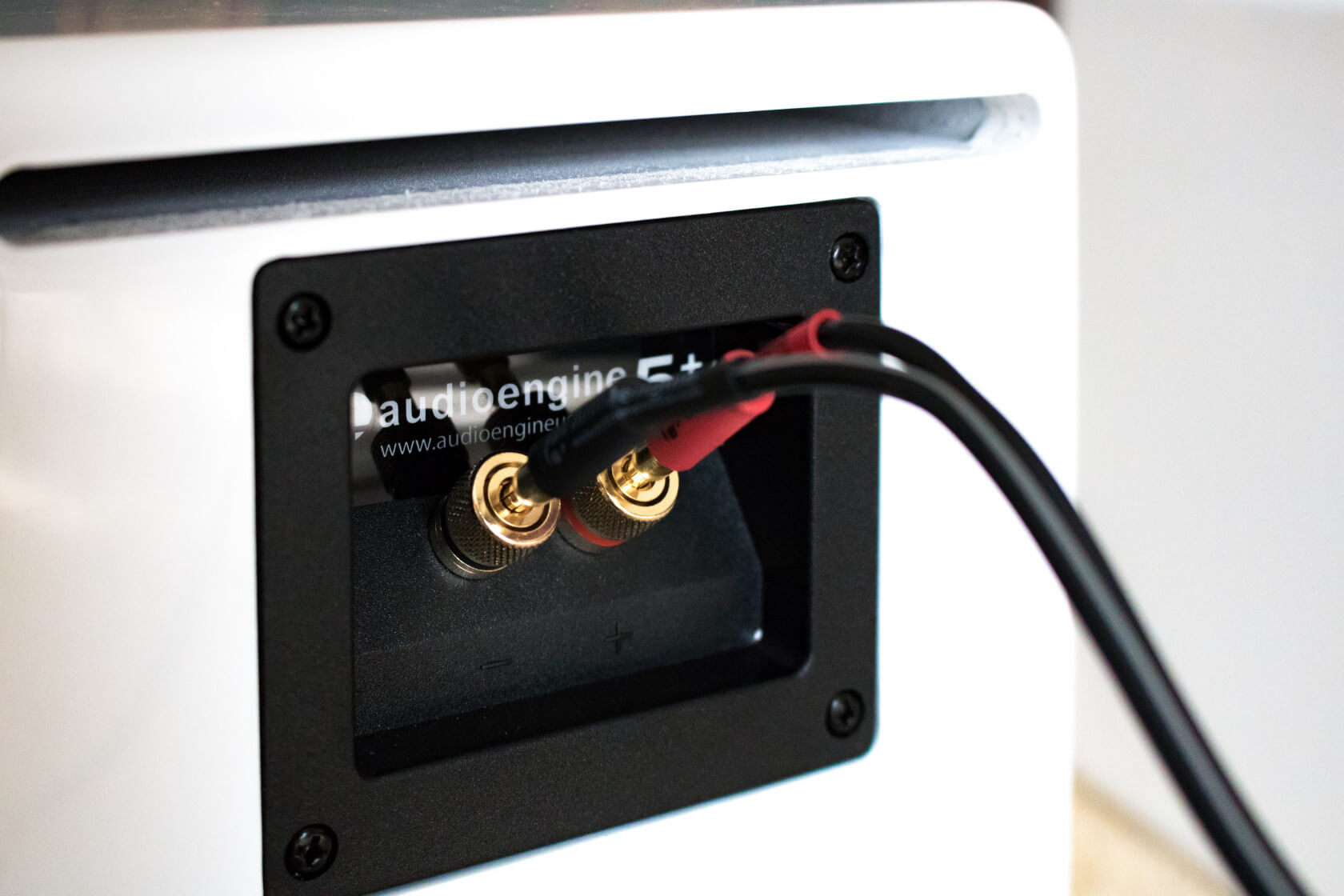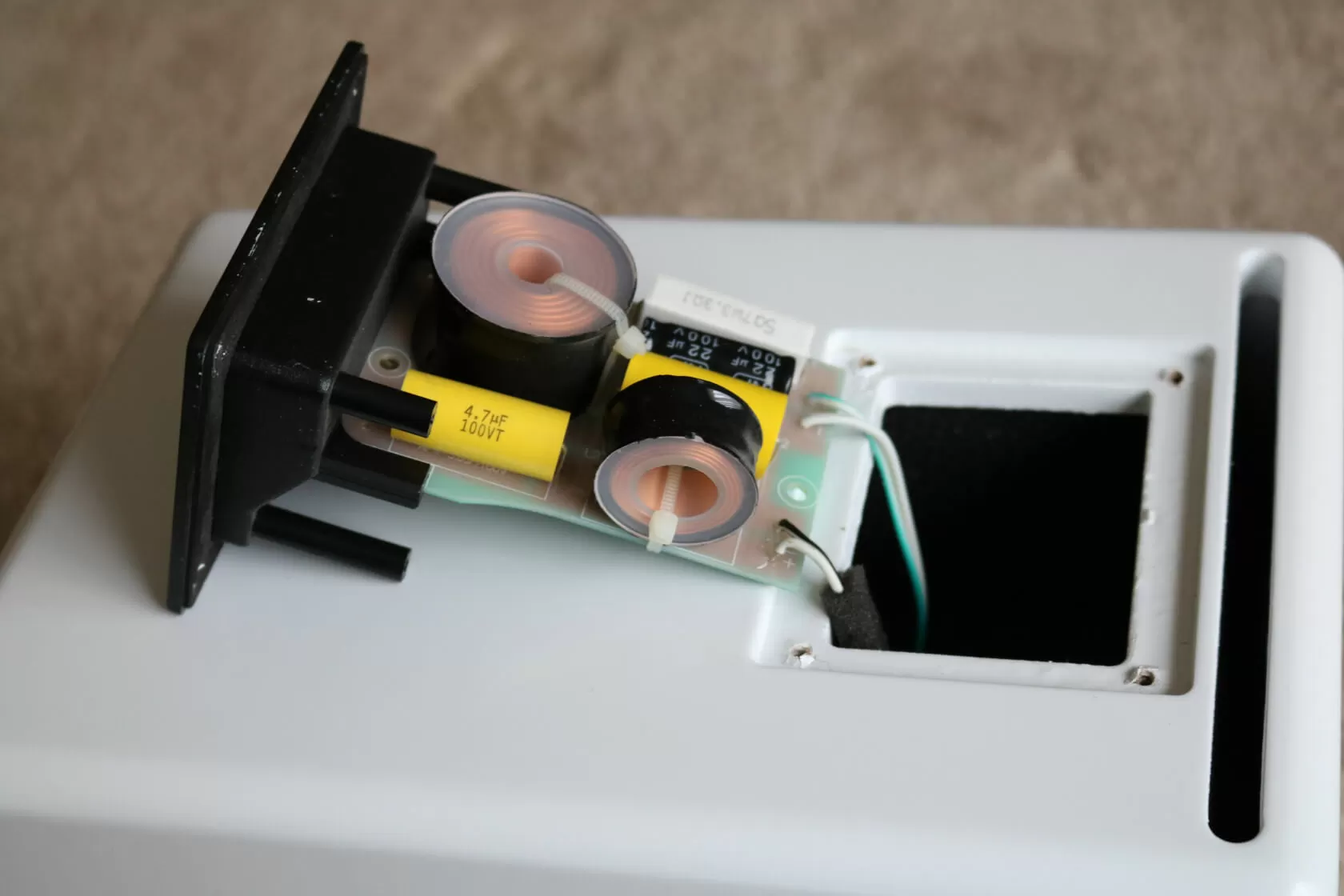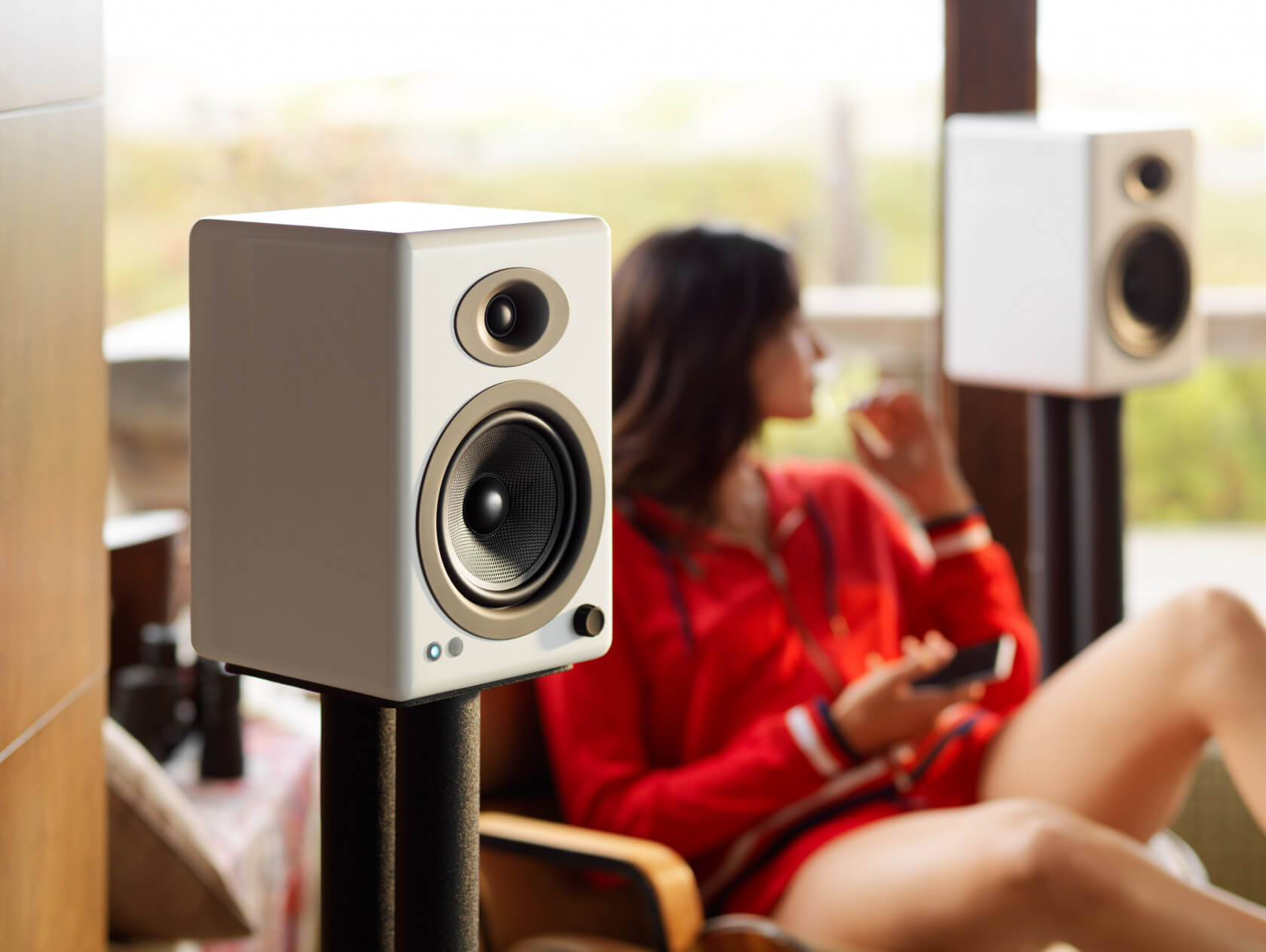When you've decided that your TV or monitor's built in speakers just don't cut it anymore, there are plenty of options to choose from. Of course, you can go to your local big box store and grab a pair of cheap bookshelf speakers, but for those that care about audio quality, you'll want to do some research beforehand.
Today I'll be taking a look at the latest product from Audioengine, the A5+ Wireless Powered Speakers. Audioengine has had a long history of making high quality prosumer audio equipment for those that want audiophile-grade components, but at an affordable price.
We recommended the original A5+ speakers in our Best Of feature last year in the studio speaker category. The A5+ Wireless is very similar to the A5+ with the added support for Bluetooth playback. This is thanks to the built-in AKM AK4396 D/A converter, the same chip powering Audioengine's standalone B1 Bluetooth Receiver. Other than that, the two models use the same drivers and amplifiers.
Starting with some basic specifications, the A5+ comes with 5" Kevlar woofers and 3/4" silk dome tweeters. Kevlar is used in high-end speakers due to its strength, it retains its shape when being driven at high volumes. The left unit contains the amplifier and all of the internal circuitry while the right unit is passive. Both units measure 10.75" x 7" x 7.75" although the left unit will extend about an inch further back due to the cables and heatsink. These speakers are very heavy, too, with the left unit weighing 15.4lbs and the right unit weighing 9.6lbs.
The bottom of the speakers are padded with a black foam material. This will reduce unwanted vibrations with whatever surface you place them on. In the center is a standard 1/4" threaded mount.
The speakers are made out of 1/2" thick MDF and in addition to the glossy white finish boxes we reviewed, the A5+ Wireless also comes in satin black and bamboo finishes. The A5+ Wireless has a very standard speaker look with not too much going on in the front. The left unit has a volume knob with tactile bumps between levels. With a push, this knob can also mute the speakers. Also on the left speaker is a LED power indicator and IR receiver for the included remote control.
On the back we find all of the connectivity. From top down the A5+ Wireless has a Bluetooth antenna, a Bluetooth pairing button, a 3.5mm input, an RCA input and output, binding posts for connecting the right speaker, a power switch, a voltage selector switch, a replaceable fuse, and finally an AC power input.
Although the A5+ has an internal DAC, it is only connected to the Bluetooth input. This means the 3.5mm and RCA inputs will be using the DAC on your computer or phone. If you're looking for speakers of this caliber, you may want to consider an external DAC to get the most out of them. As for the RCA output, this is meant for use with an external subwoofer.
In my testing I found the Bluetooth range to be excellent. This is nothing like the average short-range Bluetooth earpieces that we are used to see. The A5+ Wireless produced clear audio from more than 50 feet away. Inside my house, I was only able to break the connection by placing the speaker in the corner of the basement and walking to the top floor in the opposite corner. There was little to no loss of quality in between.
In terms of included cables, you will get 4m of 16AWG speaker wire with connectors preattached, 2m of RCA cable, and 2m of 3.5mm cable. The included speaker wire and terminals feel very high quality. If you want a longer run or would prefer to use your own cable, that will work as well. On the back of the right speaker, all we need is speaker wire inputs since the amplification is done in the left unit. Both speakers feature a bass port on the top to allow for proper airflow. This means you should also maintain at least 6" of clearance from the back of the speaker.
Taking a look inside both units, starting with the right speaker, all we find is a passive crossover. This collection of inductors, capacitors, and resistors splits up the incoming audio signal into a high frequency and low frequency component.
For the A5+ Wireless, I measured this point to be right around 2KHz. The two separate outputs then drive the woofer and tweeter. Splitting up the audio this way allows for a better playback than a single speaker solution since each driver is tuned to a specific frequency. Considering how solid the external speaker wire was, I was a bit surprised at the thinness of the internal wiring. These aren't made to be ultra-powerful loudspeakers so it's probably not a big deal. What is good to see though is the ample acoustic padding to prevent echoing and internal vibrations.
Moving to the left speaker, we find all of the interesting components. Immediately noticeable is the massive toroidal power transformer that gives the A5+ Wireless a peak output of 150W. This style of transformer is more expensive than traditional "E" and "I" transformers, but they radiate less magnetic interference which can help cut down on noise.
We also see lots more use of the acoustic padding around the wires and inside the cabinet. The rather large circuit board inside contains the amplifier, Bluetooth receiver, power management, and signal processing components as well. The internal wiring is also easy to disconnect from the speaker cabinet if for some reason you need to service the unit.
On to sound quality... For my listening tests, I used a wide variety of genres including classical music, some rock music, some pop music, and some light instrumental music. I tested in three common listening environments: a wide open room with few walls and high ceilings, a smaller family room, and finally a basement with lots of walls and shorter ceilings.
If you've never listened to proper high-quality speakers, you're in for a treat. Good speakers have the effect of making good recordings sound great and making low-quality recordings sound even worse. They bring out parts of the music that often go unnoticed on regular speakers. For example, instead of just hearing the rumble of a bass drum, you can hear the impact of drum head and the reverberations in the room it was recorded in. When listening to a flute, you can hear the air rushing over the mouthpiece.
The size of Audioengine A5+ Wireless speakers is an interesting point of conversation. I think they are a tad too big to put on a computer desk, but may appear slightly too small to use in a home theater. Nevertheless, they get loud. Really loud.
With the speakers cranked all the way up, I found a Windows desktop PC volume of just 12/100 was plenty loud for normal listening. Turning it up to around 50 was right on the edge of what I was comfortable listening to. They can easily fill up an entire room without breaking a sweat and still have plenty of range to grow.
Creating an accurate soundstage is also important. Poor quality speakers will make everything sound like it is coming from the center or from the middle of your head. With good speakers, you should be able to close your eyes and pick out the location of any instrument or voice in the music. The A5+ Wireless does a great job at this.
There is certainly some room for improvement towards the lower frequencies, but given the size and cost of these speakers, I'm very impressed. The speakers retained quality even at higher frequencies without becoming harsh. They were punchy down into the low to mid frequencies but started to wash out slightly with bass and sub-bass frequencies. The bass in a near-field listening experience was tight and was plenty powerful enough to fill a small room.
If you want proper bass response in a larger room though, you'll need to get a dedicated subwoofer since the A5+ can't go down that low.
You could easily spend 5 to 10 times more to get a top-of-the-line set of speakers, but at that point, many will find diminishing returns. At $500 for the black and white models and $570 for the wooden finish, these speakers certainly aren't cheap. They are for listeners that know what they are doing and what they want from an audio system.
You can also spend less money and get much lower quality speakers or spend more money and get slightly better speakers. All in all, the Audioengine A5+ Wireless are incredibly fun to listen to provide a rich, room fulling sound. If you are in the market for some great speakers and if you can find them on sale, I would certainly pick them up. If you have the budget, it's hard to go wrong with them.
Shopping Shortcuts:
- Audioengine A5+ Wireless Speakers on Amazon, AudioEngineUSA.com
Pros: Great sound quality. Long range Bluetooth playback. Room filling sound without distortion.
Cons: Price. Only analog inputs.

